#ladies of llangollen
Text
me and who
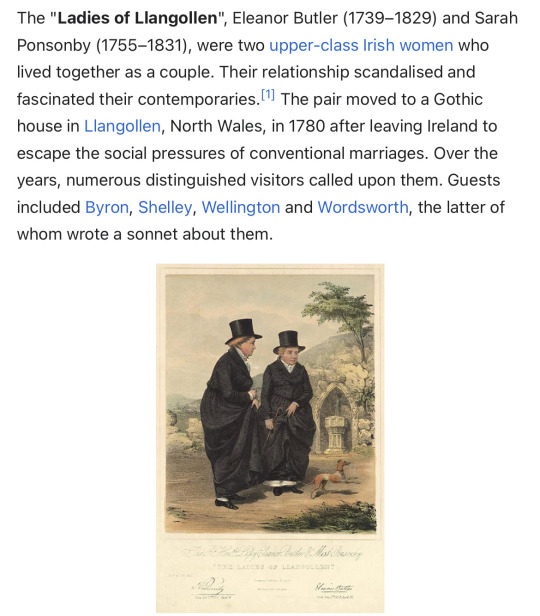
#ladies of llangollen#eleanor butler#sarah ponsonby#goth girls#irish history#lgbt#lgbtq#meme#gothic#sapphic#memes#history#percy shelley#lord byron#william wordsworth#duke of wellington#lesbian#lesbian history#wlw#goth lesbian#queer#goth#goths#goth girl#goth gays
261 notes
·
View notes
Text
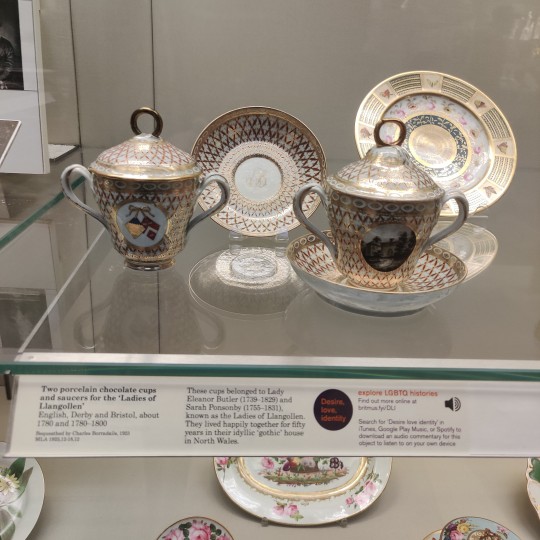
Who wants to drink hot chocolate with me in our idyllic gothic house?
6 notes
·
View notes
Text

One of my favourite places to visit in Llangollen.
16 notes
·
View notes
Link
Celebrated Virgins: A Story of the Ladies of Llangollen at Theatr Clwyd
Eleanor Butler, the oldest of the Ladies of Llangollen, died on the 2nd of June, 1829, aged 90. Sarah Ponsonby died just a year and a half later, in 1831.
This play about them looks excellent and has had great reviews!
#ladies of llangollen#theatr clwyd#wish I could see it!#history#theatre#welsh history#lesbian history#queer history#welsh queer history#link#pride#m
15 notes
·
View notes
Text

excerpt from Cottage Gardens by Claire Masset
10 notes
·
View notes
Text
This portrait of the Ladies of Llangollen goes some way to repeat the slander against them: that they were an 'odd' couple, dressed in masculine clothing and mimicked husband and wife. James Henry Lynch copied Margaret Parker's secret of drawing the faces of these inseparable friends, Eleanor Butler (c.1738-1829) and Sarah Ponsonby (c.1755-1831), without permission and added the manly jackets, men's top hats and their well-known garden scene, and mass-produced the image.
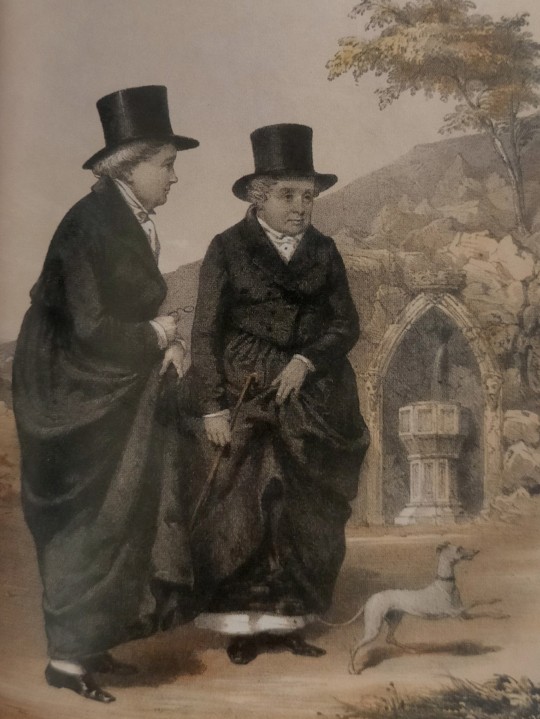
"Normal Women: 900 Years of Making History" - Philippa Gregory
#book quotes#normal women#philippa gregory#nonfiction#ladies of llangollen#slander#odd couple#menswear#fit check#james henry lynch#mary parker#secrets#inseparable friends#eleanor butler#sarah ponsonby#jacket#top hat#garden scene#mass production
1 note
·
View note
Text
Her attraction to heights accompanied her fear that she might be tempted to leap. Each time, she went grimly aloft to experience the possibility of a fall.
The Ladies, by Doris Grumbach
#page 100#the ladies#doris grumbach#the ladies of llangollen#lady eleanor charlotte butler#lady eleanor butler#eleanor butler#sarah ponsonby#Plas Newydd#queer lit#lgbtq+ lit#heights#call of the void#high place phenomenon#quote#quotes#literature#book#booklr#reading
3 notes
·
View notes
Text
After my post about Carmilla, old timey lesbians and Very Good Friends made the rounds, some people commented that they wanted more info about how the social change occurred and Very Good Friends And Possibly Lesbians turned from a good thing to a bad thing, I looked it up.
When I say I looked it up, I mean, I went to look for the Twitter threads that speak about it, made by @/firecrackerx (Cristina Domenech, in Spanish). I will use these two threads, half translate, half comment by myself. From there on, you figure it out yourselves.
So, basically, what happened in the 18th and 19th Century anglosphere upper classes (this may or may not be the case for other classes or other countries) was that men and women lived in separate spheres. They rarely mixed and when they did, it was according to very strict rules (Jane Austen's books are a good example of this, she is turn of the Century).
[This obviously still happens in societies where there is such a rigid difference and it has probably happened in any society where the social gender roles are very separated. But back to the point.]
For women, you had to be at home, private life, you had to be passive, sweet, motherly and spiritual. The Angel in the House. They also never take initiative with anything, and specially not Sex. Sex is the man's domain and so only men can make advances in terms of sex.
Being next to a man unsupervised meant Sex was happening or almost, so women would be with other women most of their time. When unmarried, almost exclusively. And from there: Very Good Friendship happened, or as Cristina calls them "Romantic Female Friendship" or jokingly, "Intense Friendship".
Going back to Dracula because for many of you it is the discovery of this kind of friendship: Mina and Lucy. What Mina and Lucy do is the usual thing in this kind of relationship. All the emotions and feelings you couldn't pour into a man because well What Would People Say About Us Then, you could pour into your girlfriend. And they did, knowing that eventually each of them would marry a man and maybe the friendship will stay the same or not.
This was accepted, including the kissing and hugging and it all because women did not have Sex, that was a man's thing. It was (and think about it, for many people it still is) impossible for two women to be having Sex so not only it was accepted: it was considered Virtuous and Good. The best example of this is the Ladies of Llangollen: Anne Lister thought they were together but everyone else wasn't so convinced because well, two women living together, sure it's odd but Sex cannot possibly happen.
Sure, Victorians invented pornography, including lesbian porn. But real women did not do these things because VirtueTM.
As I mentioned in my other post: many of these relationship were just friendships, many were romantic relationship and some were actual lesbians having sex and dating. The concept of these relationship is foreign to us, we don't have these romantic relationships anymore, but it was obviously a good façade for lesbians because of all I mentioned before.
So, this is how it goes up until the end of the 19th Century or so. What happened that everything changed?
A couple of things, one of them was feminism and women wanting to be economically and personally independent and many women being able to actually be independent. But a woman living alone and single is a bad thing, so we'll use the Boston marriage thing, which is the best way to have a SuperVirtuous Romantic Friendship With My Very Best Friend (totally not lesbians, no sir) (well, again, some were lesbians, many were just not wanting to share their lives with Victorian men, understandably).
Before this, it wasn't a problem because Very Good Friends then went on to marry a man but now the "problem" with this (for men) was that women weren't getting married (to men). Incel much?
And so, Victorian doctors interested in sex (sexologist?) investigated the question: how come women don't want to be with men if that is the only way? If women are passive and lack initiative, how come they are actually making decisions? The only possible answer is: they are not women.
I'll let you a moment to accept that many of you are from this moment on Not Women as you thought you were because you like sports, make decisions, are assertive or don't want to get married.
Anyways, now that doctors are investigating the question, the only possible conclusion to women not wanting to marry men when they have Very Good Friendship is that they are inverted and have some kind of disorder.
It took some decades, until the beginning of the 20th Century for these ideas to be accepted and established. The Bostonians (the book where the term and idea of "Boston Mariage" first appears) was published in 1886, almost 10 years before Dracula (1897). Carmilla is from 1872. The Ladies of Llangollen, that I mentioned at the beginning died in 1829 and 1831. This is to give you an idea of a timeframe.
In Carmilla, as I mentioned, the fear and horror come from Carmilla making advances and showing sexual desire. More than 20 years after that we have Dracula, with Lucy and Mina being virtuous good friends. For contrast, Dracula's flatmates do show desire for Jonathan, something women do not have at the time, therefore, those aren't really women.
So both Carmilla and Dracula are from the time when Victorian doctors are "discovering" these new tendencies and speaking about them but they haven't reached the general population yet.
However, and this will ring a bell with modern readers: in the origins of feminism and the suffragist movement, many women detached themselves from it for fear of being read as homosexuals, with the stigma (and later crime) of it. Many suffragist and feminist also refused lesbians in their team for the same reason (I'm not a lesbian but people might think I am because a lesbian is here). Once again, a win for the men.
But there you have it, a short story of women relationships of all sorts.
#dracula#carmilla#history of women#history of lesbians#lesbianism#victorians#1800s#the ladies of llangollen#anne lister#dracula daily
144 notes
·
View notes
Text
The irresistible tale of their passionate, 50-year “romantic friendship” and the elaborate, beautiful home and garden they constructed made them famous in their own lifetimes, and they have remained a symbol of enduring same-sex happiness ever since. They are “queer foremothers”, as a newly rereleased book about the Ladies, Chase of the Wild Goose, puts it.
#the ladies of llangollen#i’ve been there many years ago and yes you do feel them#they made it such a lovely and peaceful place bless them
13 notes
·
View notes
Photo
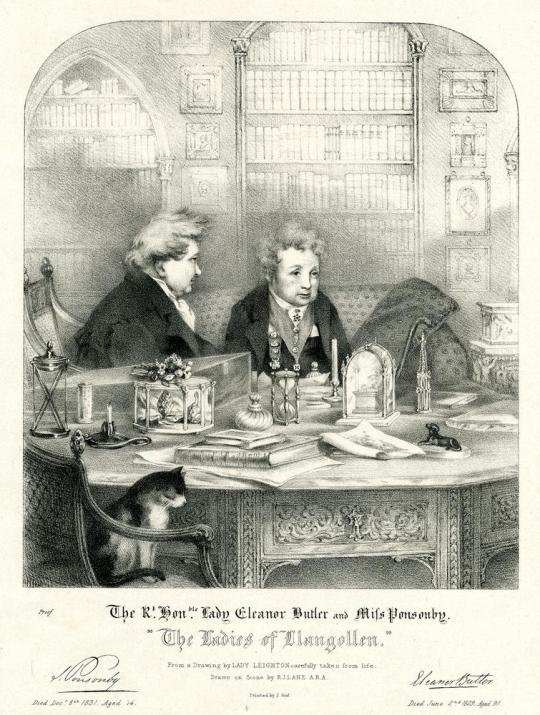
The Rt Honble Lady Eleanor Butler and Miss Ponsonby ‘The Ladies of Llangollen’, Richard James Lane, 19th Century
#The Rt Honble Lady Eleanor Butler and Miss Ponsonby ‘The Ladies of Llangollen’#the ladies of llangollen#Richard James lane#lane#19th century#1800s#print#art
13 notes
·
View notes
Photo






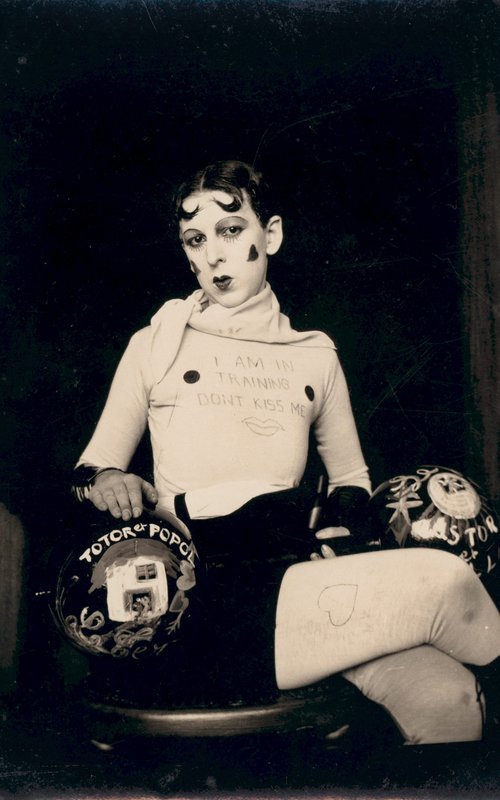
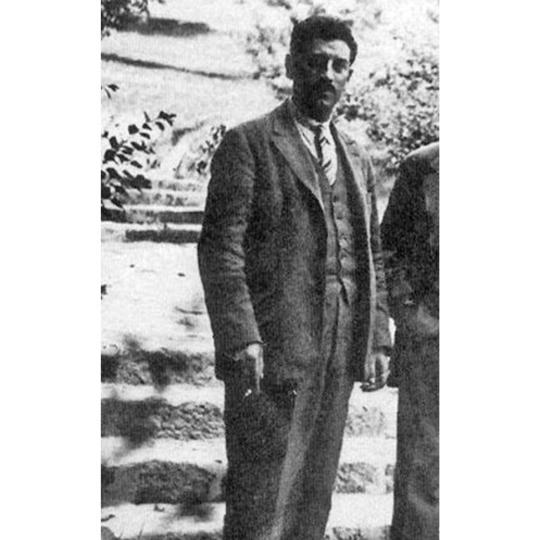
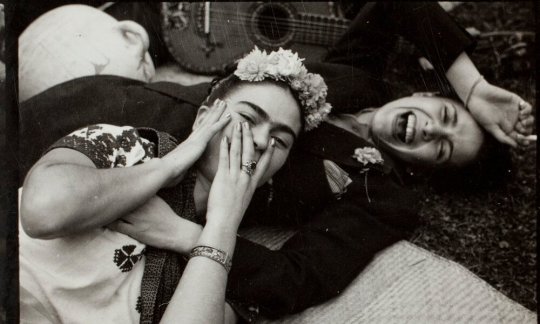
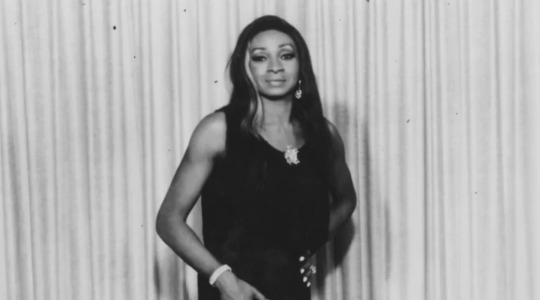
I was talking with a friend recently about our favourite images from queer history, and while I adore the compilations of photos of people being explicitly and obviously queer, I wanted to share some of the images that have touched my heart. All of these are of queer subjects and I have linked some articles about the people in question below, in case anyone is interested! I have a lot more so tell me if y’all are interested.
Princess Vera Gedroitz
Marsha P. Johnson & Pride
The Story of the Ladies of Llangollen
Amrita Sher-Gil
Carlos Jáuregui
Cássia Eller
Claude Cahun
Bajazid Doda
Chavela Vargas
Jackie Shane
#queer history#making queer history#lgbt history#lesbian history#transgender history#trans history#gay history#bisexual history
5K notes
·
View notes
Text
Midnight Pals: Ladies of Llangollen
Mary Shelley: sup fuckers
Shelley: what's going on here
Lord Byron: [tossing hair] ah mary what a vision you are
Lord Byron: [tossing hair] percy and i were just about to visit the ladies of llangollen
Shelley: why are my boyfriends sneaking around together behind my back
Mary Shelley: what the hell is this ladies of llangollen bullshit
Lord Byron: [tossing hair] ah see mary it's a most curious thing
Byron: [tossing hair] two women living together
Byron: [tossing hair] science simply can't explain it
Mary Shelley: they're lesbians byron
Byron: [tossing hair] no see it's these 2 women living together
Byron: [tossing hair] and their lady servant too
Byron: [tossing hair] explain that!
Mary Shelley: what's so hard to understand? it's a fuckin polycule
Mary Shelley: we're literally in one
Lord Byron: [tossing hair] lesbians?
Byron: [tossing hair] oh ho ho only cuz they haven't met me yet!
Byron: [tossing hair] isn't that right percy old man?
Percy Shelley: yes dear
Byron: [tossing hair] now we're off!
Mary Shelley: why're you going all the way to llangollen
Mary Shelley: we got perfectly good lesbians at home
Byron: [tossing hair] what?
Mary Shelley: you heard me fucker
Mary Shelley: byron are you just going to llangollen to hide from your ex girlfriend
Byron: [tossing hair] ha ha mary what a ridiculous notion
Byron: [tossing hair] ha ha just uh
Byron: [tossing hair] ridiculous
Mary Shelley: so it wouldn't bother you if caroline lamb also visited the ladies of llangollen then
Byron: [tossing hair] it wouldn't bother me at all
Byron: [pausing mid hair toss] why? is she there? what did you hear?
[at llangollen]
Byron: [tossing hair] delightfully devilish byron, caroline lamb will never think to look for you here
Caroline Lamb: [barging into llangollen] WHERE'S BYRON
Lamb: I KNOW HE'S HERE
Lamb: DON'T YOU LESBIANS LIE TO ME
Lamb: I CAN SMELL HIS AXE BODY SPRAY
William Wordsworth: i was so inspired by those ladies of llangollen that i wrote a sonnet about them
Wordsworth: "there once was a girl from nantucket..."
Mary Shelley: that's not a fuckin sonnet
Wordsworth: uh excuse me i think i know sonnets
#midnight pals#the midnight society#midnight society#percy shelley#mary shelley#lord byron#caroline lamb#william wordsworth
1K notes
·
View notes
Quote
Homosexuality was both silenced and taboo. Most historians agree that the concept of homosexuality is modern because the idea of sexual identity was not fully established until the nineteenth century. Jo Stanley has suggested that many women who fell in love with women could not identify or understand their feelings. Historians of transvestism Ruldolf Dekker and Lotte van de Pol have argued that 'it is logical that these women would think: if I covet a woman, I must be a man'. Lesbians may have thought that cross-dressing and acting like men allowed them to love women during a time in which Europeans could not conceive of the idea of lesbianism.
Rebecca Alexandra Simon, Pirate Queens: The Lives of Anne Bonny & Mary Read, p81-82
This is the sort of absolute bullshit I’m talking about when I talk about the myth that sexual orientation and sexual identity didn’t exist until the nineteenth century. To be clear when I talk about this I’m not trying to downplay the pathologization of homosexuality that happened throughout the nineteenth and twentieth centuries and the effects that had on queer people. I’m simply talking about this myth that pre-nineteenth century people had no understanding of their own sexual desires and no sexual identity.
First of all it is just blatantly untrue to suggest that 18th century Europeans “could not conceive of the idea of lesbianism”.
I often see the fact that sex between women was legal in England used as evidence that 18th century Europeans didn’t know that sex between women was possible. But people seem to be forgetting that England is not the entirety of Europe.
There are cases of women being executed for having sex with women across Europe, they would be drowned or even burned alive. (see Louis Crompton, The Myth of Lesbian Impunity Capital Laws from 1270 to 1791)
Often the wording of sodomy laws were vague but could be interpreted as covering sex between women. Often supplementary documents would clarify for example a 1780’s French legal book defines sodomy as:
the crime of any man with a man, of any woman with a woman; even of a man with a woman, when, by unimaginable debauchery, they do not use the ordinary path of procreation.
(Michael David Sibalis, The Regulation of Male Homosexuality in Revolutionary and Napoleonic France, 1789-1815, p81)
However some laws explicitly criminalised sex between women. For example the Constitutions of the Holy Roman Emporer Charles V, 1532, states:
if anyone commits impurity with a beast, or a man with a man, or a woman with a woman, they have forfeited their lives and shall, after the common custom, be sentenced to death by burning.
And the 1574 statutes of the Italian town Treviso were very clear:
If any person (leaving the natural use) has sexual relations with another, that is, a man with a man if they are fourteen years old or more, or a woman with a woman if they are twelve or more, by committing the vice of sodomy-popularly known as “buzerones” or “fregatores”-and this has been revealed to the city magistrates, the detected person, if a male, must be stripped of all his clothes and fastened to a stake in the Street of the Locusts with a nail or rivet driven through his male member, and shall remain there all day and all night under a reliable guard, and the following day be burned outside the city. If, however, a woman commits this vice or sin against nature, she shall [also] be fastened naked to a stake in the Street of the Locusts and shall remain there all day and night under a reliable guard, and the following day shall be burned outside the city.
(Crompton, p18)
But even if we are just talking about England there are references to lesbianism in 18th century England. In fact the earliest known usage of the word lesbian (in the sense of a woman who is sexually or romantically attracted to other women) is from The Toast by William King published in 1732:
this little Woman gave Myra more Pleasure than all the rest of her Lovers and Mistresses. She was therefore dignified with the Title of Chief of the Tribades or Lesbians.
Hester Thrale Piozzi described the Ladies of Llangollen as “damned Sapphists” (Emma Donoghue, Passions Between Women, p168) and suspected Anne Damer of “liking her own Sex in a criminal Way”. (Diary of Hester Thrale Piozzi, 17 June 1790) Damer was also satirised as a lesbian in the 1778 poem A Sapphick Epistle and the 1794 pamphlet The Whig Club.
There were many references to the ancient Greek poet Sappho who was often credited with inventing the concept of sex between women. A Sapphick Epistle describes Sappho as “the first Tommy the world has upon record; but to do her justice, though there hath been many Tommies since, yet we never had but one Sappho.”
“Tommy” being another word for a women who were sexually interested in women. We see this word used in the 1773 poem The Adulteress:
Women and Men, in these unnat’ral Times,
Are guilty equal of unnat’ral crimes:
Woman with Woman act the Manly Part,
And kiss and press each other to the heart.
Unnat’ral Crimes like these my Satire vex;
I know a thousand Tommies ‘mongst the Sex:
Sappho was also invoked in the 1749 pamphlet Satan’s Harvest Home:
Sappho, as she was one of the wittiest Women that ever the World bred, so she though with Reason, it would be expected she should make some Additions to a Science in which Womankind had been so successful: What dose she do then? Not content with our Sex, begins Amours with her own, and teaches the Female World a new Sort of Sin, call’d the Flats, that was follow’d not only in Lucian’s Time, but is practis’d frequently in Turkey, as well as at Twickenham at this day.
“Flats” refers to the “game of flats” or “game at flats” which was an 18th century euphemism for tribadism and is referenced again in Satan’s Harvest Home:
I am credibly informed, in order to render the Scheme of Iniquity still more extensive amongst us, a new and most abominable Vice has got footing among the W—n of Q—–y, by some call’d the Game at Flats;
So while its true that sex between women wasn’t illegal in England this wasn’t because the entire country was ignorant to the possibility.
The myth that there was no sense of identity associated with sexual attraction is easily disproven by the molly subculture. In 18th century London there was a community of men who had sex with men, who identified as mollies. Mollies would meet in molly houses, they had their own traditions, slang, songs and even had sobriquets known as maiden names that identified them as part of the group. (see Mother Clap's Molly House by Rictor Norton)
There is also evidence of 18th century men understanding their attraction to other men as something innate and natural to them. For example Gerrit van Amerongen stated at his 1776 sodomy trial that men who had sex with men were “born with it and they can be as amorous to each other as man and wife can be.” (Anna Clark, The Chevalier d’Eon, Rousseau, and New Ideas of Gender, Sex and the Self in the Late Eighteenth Century)
Lillian Faderman suggests that women were less likely to recognise their sexual attraction to each other because they would have “internalized the view of females as having little sexual passion” and as they bore “no burden of visible proof as men do, they might deny it even to themselves”. (Surpassing the Love of Men, p16) However Chris White rather succinctly dismisses Faderman’s argument: “it seems hardly credible that simply because women did not have penile erections they would not have recognized how sexual arousal felt and what it meant”. (Emma Donoghue, Passions Between Women, p122)
Taking all of this into consideration it seems somewhat absurd to claim that “women who fell in love with women could not identify or understand their feelings”.
And this is not even getting into the “if I covet a woman, I must be a man” statement which is a whole other can of worms to unpack.
98 notes
·
View notes
Photo
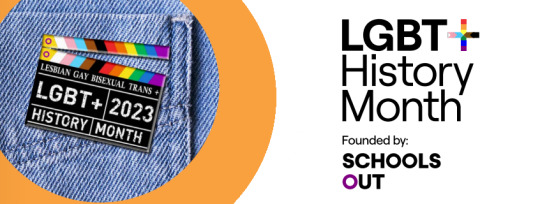
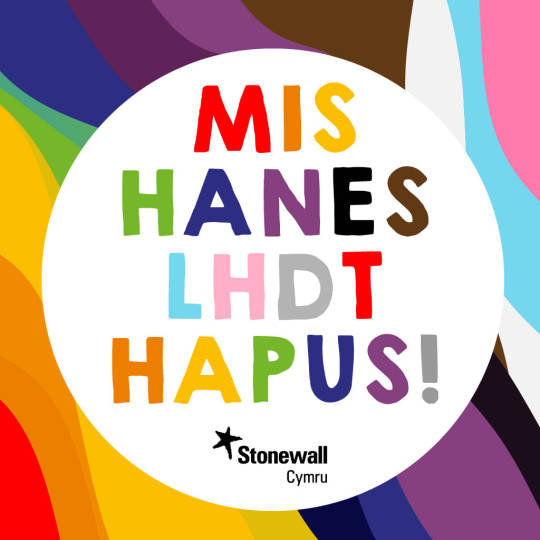
Mis Hanes LHDT+ Hapus! Happy LGBTQ+ History Month! Here is my annual post compiling the events happening in Wales:
Throughout February until June 30th at St Fagans Museum:
Wales is... Proud & Wales is... Remembering Terrence Higgins
From the 8th until 27th: Cynon Valley Museum Pride exhibition
Various dates: Queerway, 9th at Porth, 10th Merthyr, 14th Llanelli
Various dates: Iris on the Move, 13th at Chapter Arts Centre Cardiff, 17th at National Museum Cardiff, 25th at Aberystwyth Arts Centre & more
Various dates: Queer Emporium - 9th Comedy with Leila Navabi, 17th Transition, 18th Sound Check (music), March 2nd You’re Invited, March 16th Chwarae’r Chwedlau & more
9th Queerdos Wales’ Anti Valentine’s Day Ball at Porter’s Cardiff 7pm
9th Tai Pawb ‘Older LGBT+ People in Housing’ 11am online
11th Sadie’s Butterflies at National Waterfront Museum Swansea
12th Lezdiff - Cardiff Lesbian Festival at Chapter from 12pm
16th Paned o Ge Kinky Books at 7pm
17th Hwyrnos: QUEER at the National Museum Cardiff from 7pm
17th Lleswyl online from 7pm
18th Aberration at Aberystwyth Arts Centre, Proud Writing workshop at 2pm and Dreaming up the Past at 7pm
20th Dyddiau Du + Trans Aid Cymru Social
21st Llyfrau Lliwgar Online 7pm (yn Gymraeg)
21st Reclaim the Frame at Snowcat Penarth
22nd Dyddiau Du Queer Words
23rd Conwy LGBTQ+ Celebration at Conwy Culture Centre 6-8pm
25th Cardiff Trans Singers, Cathays at 7pm
28th Ladies of Llangollen British Library event online from 8pm
March 5th Carmarthen LGBTQ+ History Month, details tbc
March 7th National Library of Wales Aberystwyth - Queer Tales from Wales’ The Story of Amy Dillwyn at 5pm
#mis hanes lhdt#LGBT history month#lgbtq history month#lgbt#lgbtq#wales#cymru#links#m#mine#if you know of more let me know!#or more details I couldn't find for all the times etc rn#I will update this!
19 notes
·
View notes
Note
May I suggest the Ladies of Llangollen for the list? Love your podcast!! And I really enjoyed this most recent episode, I liked the discussion of possible ways queer women could have fit into Roman society also Philinus can get it
I am absolutely baffled to discover the Ladies are not already on our list of suggestions. Thank you for the prompt to add them!
-Alice
10 notes
·
View notes
Text
Her ears closed upon the sound of Eleanor's voice assuring her that once again they would manage their escape together, somehow: nothing, no one, would prevent them.
The Ladies, by Doris Grumbach
#page 202#the ladies#doris grumbach#the ladies of llangollen#lady eleanor charlotte butler#lady eleanor butler#eleanor butler#sarah ponsonby#Plas Newydd#queer lit#lgbtq+ lit#death#dying#love#quote#quotes#literature#book#booklr#reading
0 notes